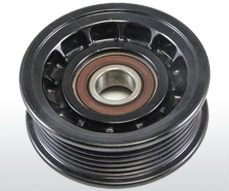Part Consolidation with Thermosets
OEM designers & engineers have been utilizing metal-to-plastic conversions within their product assemblies for decades now. From cost advantages to lightweighting objectives, plastics have been instrumental in consolidating multiple parts of a product assembly, providing a host of advantages to OEMs and consumers. Thermosets are no different; they offer the same traditional benefits of thermoplastic injection molding, including outstanding moldability and potential cost savings, yet with improved material performance over many engineered-thermoplastics.
Moldability
Because thermosets may be molded using the same manufacturing processes as thermoplastics, i.e. injection, compression, insert molding; thermosets:

Targeted part consolidation efforts must offer significant cost advantages to a product assembly in order to achieve feasibility. Molded thermoset components may offer part consolidation cost savings, via:

Where engineered thermoplastics such as nylons, ABS, polypropylenes may fail in challenging application settings, thermosets offer exceptional material performance with regards to:



Comments are closed